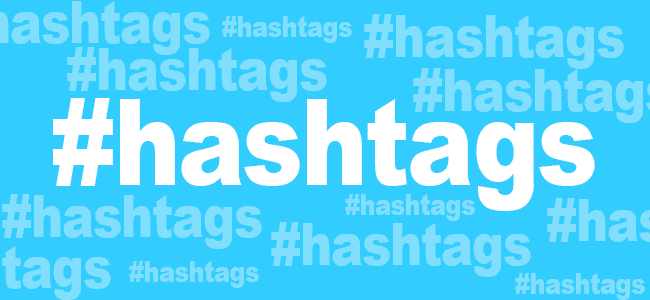Hashtags are everywhere. You can see them on sites like Facebook, Twitter, Pinterest, and Instagram,
at events, or even on commercials and movie trailers.
To
understand why hashtags are important, you have to go back a few years.
In 2007, Twitter users
began using the # sign in
front of words or phrases to create groups within Twitter. Then in 2009,
Twitter took a cue from their users and began hyperlinking
all hashtags in tweets. Now, in 2015, all major social networks(excluding LinkedIn) hyperlink hashtags because the adoption rate has been
huge!
What
are hashtags?
Hashtags are a word, or group of words after the # sign
(like #hashtag, #seo, #digitalmarketing or anything else). If you’re more
technically inclined, you might know them as a metadata tag. For marketers -
you’ll know them as a way to engage your brand with your market.
But
what does hyperlinking have to do with the importance of hashtags?
When someone clicks on
a hashtag on any of these social networks, they’ll automatically be shown all
other public posts that include the same hashtag. This is incredibly valuable
for a small business because it can expose your content to a wider audience,
and help your business get found. If someone does a search on a social network,
or Google, for a hashtag you used, your post — and potentially even your
profile — can be found by someone you never would have reached without
hashtags. This happens all the time. Hashtags are widely used to search for
content within social networks and search engines, which mean hashtags, give
you a great opportunity to get your information in front of potential customers
without paying a dime!
How
to Create a Hashtag?
Hashtags are simple
things. There are just a few technical requirements to know:
No Spaces Allowed
A hashtag can be a
single word, an abbreviation, an invented combination of letters and numbers,
or a phrase. If it is a phrase, there can be no spaces between words. All
letters and numbers must run together without spaces in a hashtag. You
can’t have punctuation or symbols in your hashtag (other than the # symbol at
the beginning). Numbers are OK, but you must also have at least one
letter with the numbers — hashtags cannot consist entirely of numbers.
Start with the # Symbol
A hashtag always starts
with the symbol # followed directly by letters and sometimes numbers. Fun
factoid: depending on where you are in the world, the symbol # is called
various things. In the United States and Canada, it is called
a number sign or sometimes a pound sign.
But in other places,
such as the United Kingdom and Ireland, that # symbol is called a hash sign.
So you see, that’s how these labels came to be called “hashtags.”
In essence, a hashtag is a label that consists of a word or phrasetag with
a hash symbol in front of it.
How
should I use hashtags?
Use hashtags on all
social networks you have a presence on, but don’t go overboard! Too many
hashtags can hurt your engagement and can get you unfollowed. In fact, when you use
more than two hashtags, your engagement actually drops by an average of 17
percent. You’ll start noticing funny hashtags, people using
lots of hashtags, and even #FullSentencesTurnedIntoAHashtag. But if you’re
using hashtags to help your business, it’s best to hashtag the keywords that
are related to your business and industry.
How to Use a Hashtag That Already Exists?
Rather than creating your own hashtag, sometimes you want to enter a discussion around a topic where a hashtag already exists. You would simply add that hashtag somewhere (usually at the end) of your Twitter tweet or other social media update.
By doing so, you are sharing your content related to that same topic. By adding the hashtag to your content, you are saying “Hey, I want to chime in on this discussion.” Others interested in that topic will see your content.



No comments:
Post a Comment